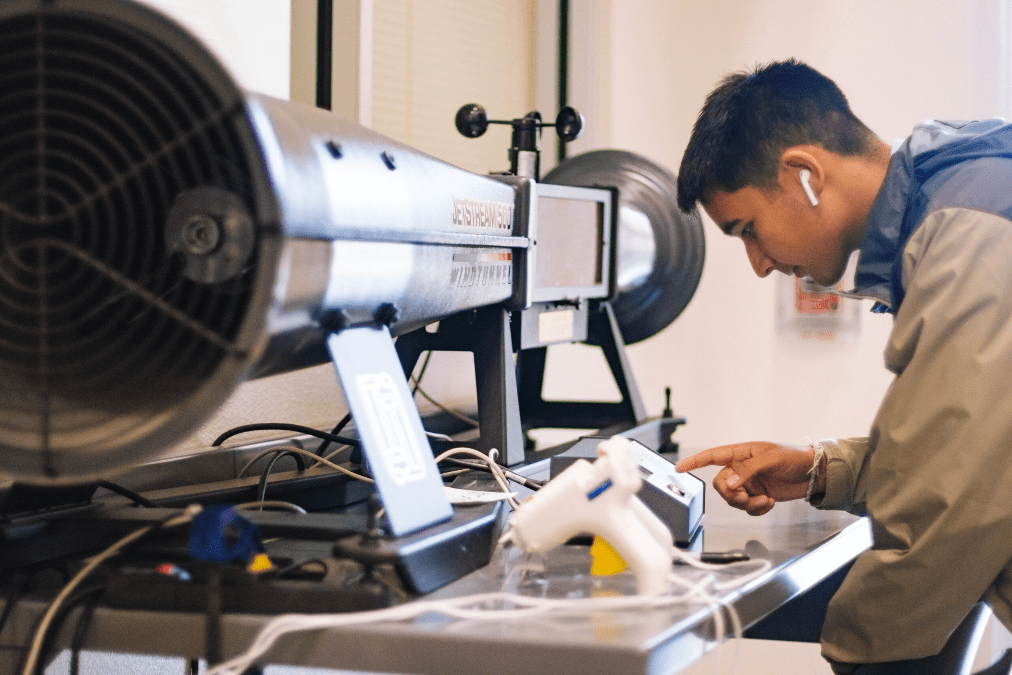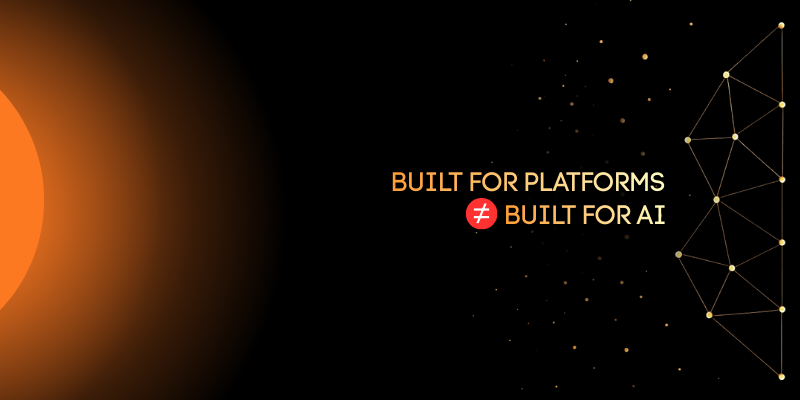Learning in the Flow of Work: A Transformative Paradigm for the Future of Work

The realm of digital learning is ever-expanding. Due to the pandemic, corporate training and learning models have undergone a tectonic shift from the traditional classroom and workshop-based formal programs to an always-on learning environment. Even traditional eLearning methodologies are also adapting to the emerging norm. ‘Learning in the Flow of Work’ is gaining momentum as an intuitive form of learning integration as part of an employee’s routine.
Organizations are today adopting more design and experience-based learning to augment their learning and development (L&D) initiatives. In this context, the advent of Artificial Intelligence (AI) and Machine Learning (ML) has opened new opportunities for hyper-personalized learning experiences for employees.
What Is Learning in the Flow of Work?
‘Learning in the Flow of Work’ is a concept pioneered by Josh Bersin in 2018. This concept is based on the fact that learning occurs best when it happens in the work environment. This type of learning is highly relevant and brief because quick learning support to handle a task at hand is available on demand. For example, consider a situation where a programmer facing a debugging issue searches for guidance within existing content libraries for a solution or a surgeon or a nurse refreshes techniques on a new equipment before a surgery through practice via a virtual reality (VR) simulation.
Learning in the Flow of Work combines micro and macro learning an integral part of the work instead of separating it. Microlearning, as we know, is impart bite-sized learning instead of lengthy chunks of information, which is accessed at the point of need or on demand when an employee desires to engage in learning. Microlearning correlates to macro learning, as the need for the latter grows as more of the former occurs.
The concept of Learning in the Flow of Work has gained momentum in the last three years. However, the components of this model have been in existence in disparate forms for many years now. One example we can cite is the existence of intranet as a medium of information repository accessed by employees across an organization. For some medium to small companies, an intranet also doubles up as a knowledge management system that hosts SOPs, process documents, and job aids. In some organizations that use a workflow management system for their business processes, knowledge management is integral to the system.
Today, many such disparate systems are brought together through integration and APIs to deliver a seamless learning experience to an employee, making learning in the flow of work possible. Platforms and systems available today are mobile device compatible, making this paradigm all the more impactful. This new paradigm is, in essence, the culmination of the various training models and strategies we have come to know over the years.
Why Is Learning in the Flow of Work Beneficial?
From improved time to productivity to seamless brand experience for an organization’s customers, this new paradigm has many benefits:
- Learning Effectiveness: The learning imparted through learning in the flow of work is contextual and proactive. This shift improves productivity and knowledge retention and also increases engagement with formal learning programs.
- Saves Effort and Time: According to a LinkedIn survey, 68% of the respondents shared that they prefer learning in the workplace and about 49% prefer learning at the point of need. When many employees are short of time, the exigencies of work prevent them from meaningfully engaging in learning through regular length courses or training programs.
- Reduces Stress: Employees often feel stressed when they do not have enough information to complete a new task at hand. Through learning in the flow of work, they can accomplish such tasks faster due to precise learning and make informed decisions. Josh Bersin’s research shows that employees who learn at work are much less likely to be stressed than those who do not (around 47%) and feel increasingly productive and successful (about 39%).
- Improves Business Outcomes: A study by Deloitte highlighted that organizations are able to see better business outcomes when they implement Learning in the Flow of Work. This is because learning in the flow of work enables faster adaptation to change and makes the transition both real-time and smoother, mainly when new products and solutions are introduced into the system.
- Enables Remote Learning: Learning in the Flow of Work democratizes learning and is agnostic to the geographical setting. Mobile interfaces are utilized where needed, and learning content is delivered real-time to anyone in the workforce who needs it, anywhere, and is not limited to the office premises.
- Reduced team member cost per acquisition and turnover: Of late, talent acquisition has turned into a zero-sum game, whereby acquiring an employee by one company means a loss to another company in the same industry. This situation can inflate employee acquisition costs. Through Learning in the Flow of Work, employees are continuously trained, and new skills are acquired; this improves overall business outcomes and prevents zero-sum situations enhancing employee work satisfaction, leading to a reduction in turnover.
Implementation Strategies
Learning Experience Platform (LXP): This software allows users to access learning content personalized to their roles and needs. Data analytics involved helps in structuring learning content and paths unique to the user. LXP also integrates learning content from various sources to build a more holistic and comprehensive learning system.
For example, using AI, an LXP can create microlearning content suggestions based on existing training material, accounting for the team member’s experiences and delivering only the relevant information to the user instead of manually searching the content for their requirements.
Chatbots: Using chat interfaces, Learning in the Flow of Work can be incorporated into the work environment. These chatbots can offer intelligent suggestions and recommendations when the team member performs a particular task and can be accessed for troubleshooting throughout the day. This integration reduces the time spent by an employee searching for the information they need.
An example of chatbot application could be a sales representative can accessing a pertinent case study before meeting a prospective customer or client by requesting the same through the chat interface. Similarly, employees in customer-facing functions can immediately look for and find the information they need for every customer interaction without switching between multiple screens. Over time, they are also better prepared to have a similar exchange in the future.
Enabled with AI, systems in themselves can, over time, identify the most common employee queries and curate answers that they found to be most helpful, thereby improving the learning experience for everyone involved.
Virtual Learning Environments: Certain sectors can benefit from accessible virtual learning environments using augmented reality (AR) applications to provide realistic simulations and real-time guidance. This is particularly useful in the healthcare, and the manufacturing sectors, where training new hires is often long and siloed. By learning in the flow of work, new hires can confidently perform their tasks without waiting for manual intervention or guidance.
Content Curation: A smart content curation strategy with a mix of specific content in text, video, and audio formats can drive learning in the flow of work. Not every organization has the capacity or the time to build every learning intervention from scratch. In such cases, curating content from multiple sources as relevant to the domain, creating learning experiences around these curations, and measuring the outcomes in performance make up a holistic framework where learning directly drives business outcomes. Curated content can be delivered via internal communication channels, emails, and other touchpoints that an employee uses every day.
Building a Resilient Organization
One thing the pandemic has taught the world is to remain resilient when facing unknowns testing our ability to adapt overnight. Learning in the Flow of Work is a game-changing intervention to train and upskill the workforce. As we move into an era of a hyper-digitized world that needs new skills and competencies across all industries, adopting Learning in the Flow of Work is a competitive edge for both employees and organizations.
At Integra, we help L&D teams experiment and innovate within their space by providing the much-needed bandwidth through our custom learning solutions, microlearning, XR in learning (AR/VR/MR/360°videos), and training modernization solutions similar to ones done for organizations across multiple industries. Our team of experts can help you design innovative and impactful learning interventions for your organization’s needs. Contact us today to learn more about how we can support you with this transformation!
Recent Blogs

From Disruption to Direction: Finding Focus in a Transforming Industry

AI in Education: 5 Trends Shaping Publishing, Assessment, and Platforms in 2026


